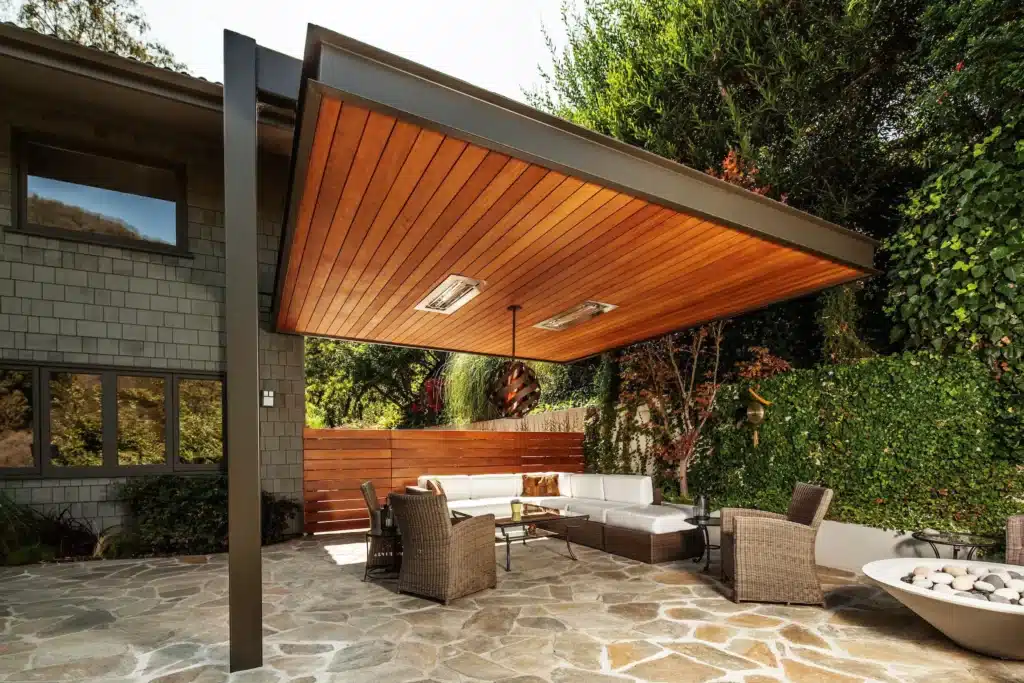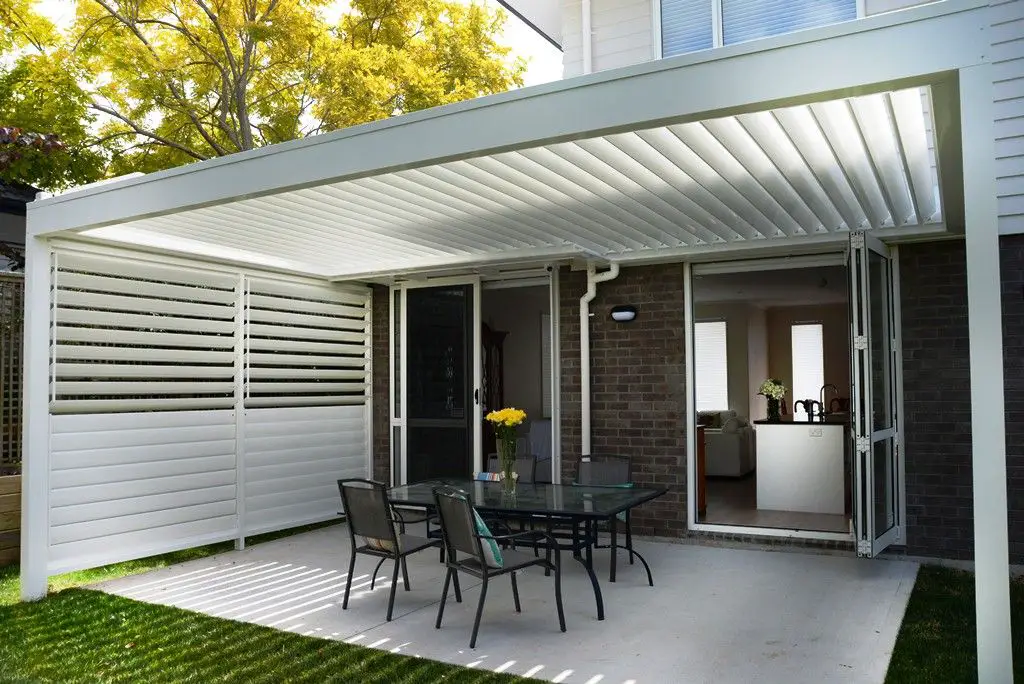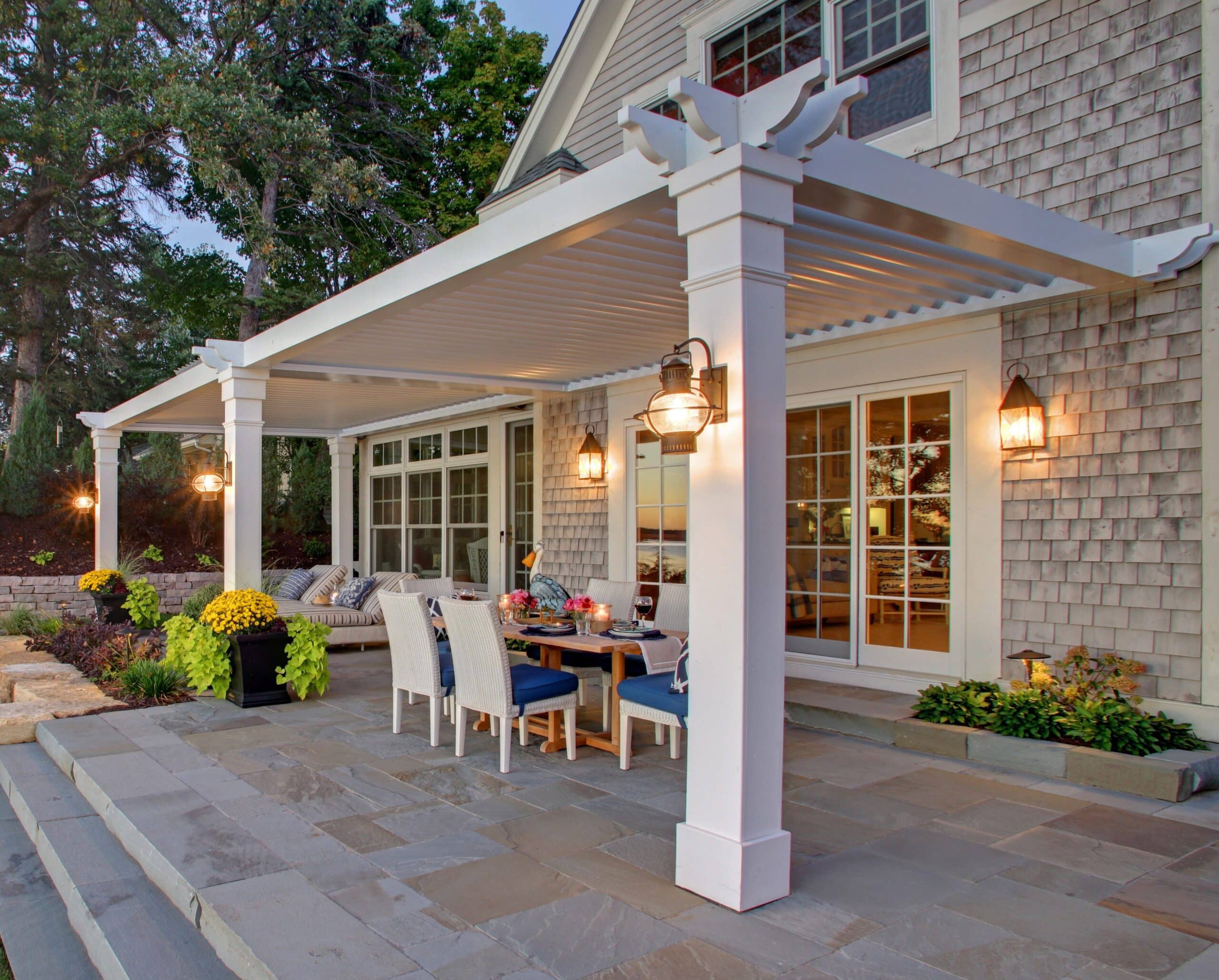How To Attach Patio Roof To House
Introduction
How To Attach Patio Roof To House: Adding a patio roof to your house can greatly enhance your outdoor living space and provide shelter from the elements. Whether you want to create a cozy spot to relax or a space to entertain guests, a patio roof is a practical and stylish addition. However, attaching a patio roof to your house requires careful planning and execution to ensure it is secure and structurally sound.
Before you begin the attachment process, it is important to decide on the type of fix patio roof you want. There are several options to choose from, including a pergola, a solid roof, or a retractable awning. Each option has its own advantages and considerations, so take the time to research and select the one that best suits your needs and preferences. Building codes and regulations vary by location, so make sure you comply with all the necessary requirements. Failing to obtain the proper permits can result in fines and delays in your project.
Once you have chosen the type of patio roof, it is crucial to assess the structural integrity of your house. This step is essential to ensure that your house can support the weight and stress of the patio roof. Consult with a professional contractor or engineer to evaluate the existing structure and determine if any modifications or reinforcements are necessary. Before you begin any construction, it is important to check with your local building department to determine if you need any permits or approvals.

Are patios attached to house?
Are patios attached to house?
Yes, patios can be attached to a house. A patio is an outdoor space that is typically paved and used for dining, entertaining, or relaxation. It is often located adjacent to a house and can be connected to it through a door or a sliding glass panel. Having a patio attached to a house offers several advantages, including easy access to indoor amenities, protection from the elements, and an extension of living space.
One of the main benefits of having a patio attached to a house is the convenience it provides. With a patio connected to the house, homeowners can easily access indoor amenities such as a kitchen or bathroom without having to go through the hassle of going inside and outside repeatedly. This makes it convenient for hosting outdoor gatherings or simply enjoying a meal outdoors.
Furthermore, an attached patio offers protection from the elements. Whether it’s rain, sun, or wind, having a patio attached to the house provides a sheltered space where individuals can enjoy the outdoors while being shielded from adverse weather conditions. This allows for year-round use of the patio, regardless of the weather.
In addition to convenience and protection, an attached patio also serves as an extension of living space. By connecting the patio to the house, it creates an outdoor area that seamlessly blends with the indoor living space. This can be particularly beneficial for individuals who have limited indoor space but still want to enjoy the benefits of outdoor living.
How do you cover a patio roof?
Depending on your budget, style, and environment, there are several patio roof covering options. There are ways to cover your patio for outdoor dining or protect it from rain and snow. This article discusses popular patio roof covering methods.
Patio roofs can be covered with pergolas or trellises. Open-lattice wood or metal constructions are typical. They offer partial shade and can be decorated with climbing plants for a relaxing outdoor setting. For rustic or classic patios, pergolas and trellises are popular.
A patio cover or awning may provide a more permanent roof for your patio. Patio coverings are usually metal or vinyl and can be attached to your home or freestanding. They provide full shade and weather protection, making them ideal for year-round patio use. Retractable awnings can be stretched or retracted as needed. They offer additional flexibility and can provide shade and sunlight on your patio.
Can you add a patio roof?
Yes, you can add a patio roof to your outdoor space. A patio roof is a great addition to any backyard or outdoor area as it provides shade and protection from the elements. Whether you want to enjoy your patio during the hot summer months or have a covered area to entertain guests, a patio roof can enhance the functionality and aesthetics of your outdoor space.
Adding a patio roof can also increase the value of your home. It creates an additional living space that can be used for various purposes such as dining, lounging, or even as an outdoor kitchen. This added space can be appealing to potential buyers and may make your home more attractive in the real estate market.
There are several options available when it comes to patio roofs. You can choose from different materials such as wood, metal, or even fabric. Each material has its own advantages and considerations, so it’s important to do your research and choose the one that best suits your needs and preferences.
If you’re considering adding a patio roof, it’s important to consult with a professional contractor or builder. They can assess your outdoor space and provide recommendations on the best design and materials for your patio roof. They can also ensure that the structure is built safely and meets all local building codes and regulations.
Before starting the construction of your patio roof, you may need to obtain permits from your local municipality. This is to ensure that the structure is built in compliance with local regulations and does not pose any safety risks. It’s important to check with your local building department to determine the specific requirements and procedures for obtaining permits.
Can I put a patio on my roof?
Yes, it is possible to put a patio on your roof. Many homeowners are now opting to utilize their rooftop space by creating outdoor living areas. This not only maximizes the use of available space but also provides a unique and enjoyable area for relaxation and entertainment.
Before proceeding with the installation of a rooftop patio, it is important to consider a few factors. Firstly, you need to ensure that your roof is structurally capable of supporting the additional weight of a patio. This may require consulting with a structural engineer or a professional contractor to assess the load-bearing capacity of your roof.
Check your local building codes to see if putting a patio on your roof is allowed. To prevent legal complications, rooftop structures must conform with local regulations.
You may design and build your rooftop hideaway once you have confirmed that your roof can support a patio and gotten the appropriate permits. Rooftop patios can use wood, composite, porcelain tiles, or synthetic turf.
Rooftop patios are exposed to sun, rain, and other weather conditions, so choose materials that can survive the elements. To make your rooftop patio more functional and attractive, consider adding shade structures, outdoor chairs, and plantings.

What is patio roof called?
A patio roof creates a year-round, comfortable outdoor living environment.
Pergolas are patio roofs with vertical posts or columns supporting horizontal beams or rafters. These beams are open and set apart to let sunlight in while shading. Wood, metal, or vinyl pergolas can be tailored to match the patio or deck’s design.
Patio covers, on the other hand, are solid roof structures that cover the patio or deck. It protects against rain, snow, and sunshine and is usually composed of aluminum, fiberglass, or polycarbonate. Patio coverings can be attached or freestanding and designed to reflect the home’s architecture.
Patio coverings are more enclosed and sheltered. They are great for harsh weather or sheltered outdoor activities. For added comfort and usability, patio coverings might have ceiling fans, lights, or retractable screens.
What materials are typically used for attaching a patio roof to a house?
When attaching a patio roof to a house, there are several materials that are commonly used. One of the most popular options is wood, which provides a natural and traditional look. Wood beams and posts can be used to create a sturdy and durable structure for the patio roof. Another common material is metal, such as steel or aluminum. Metal offers a sleek and modern appearance and is known for its strength and durability. It is often used for larger patio roofs or in areas with harsh weather conditions.
In addition to wood and metal, other materials that are often used for attaching a patio roof to a house include fiberglass, polycarbonate, and PVC. Fiberglass is a lightweight and versatile material that is resistant to corrosion and can be easily molded into different shapes. Polycarbonate is a transparent material that allows natural light to pass through, making it a popular choice for patio roofs. PVC, or polyvinyl chloride, is a synthetic plastic material that is known for its durability and low maintenance requirements.
Are there any specific building codes or regulations that need to be followed when attaching a patio roof to a house?
Yes, patio roofs must be attached to houses according to construction requirements. To ensure compliance, consult the local building department or a competent contractor. These codes and requirements vary by area and jurisdiction.
Before erecting a patio roof, a building permit is usually needed. This permit guarantees the project meets local safety and regulatory requirements. The building department may request patio roof plans and specifications, including materials, structural design, and home attachment.
Patio roof height, size, and setback may be regulated. These rules ensure that the patio roof does not block vistas, pose safety risks, or violate zoning.
What are the potential challenges or considerations to keep in mind when attaching a patio roof to a house?
When attaching a patio roof to a house, there are several potential challenges and considerations that need to be kept in mind. One important consideration is the structural integrity of the house. The weight of the patio roof and any additional materials used, such as roofing tiles or shingles, can put strain on the existing structure. It is crucial to ensure that the house can support the added weight and that the attachment points are secure.
Another challenge to consider is the weather conditions in your area. Patio roofs are exposed to the elements and need to be able to withstand wind, rain, snow, and extreme temperatures. It is important to choose materials that are durable and weather-resistant. Additionally, proper insulation and ventilation should be considered to prevent issues such as condensation or heat buildup.
Lastly, it is important to comply with any building codes or regulations that may apply to your area. These codes are in place to ensure the safety and structural integrity of the patio roof. It is recommended to consult with a professional contractor or architect who is familiar with local building codes to ensure that your patio roof meets all necessary requirements.
Are there any recommended professional services or contractors that specialize in attaching patio roofs to houses?
It’s best to hire experts for such a crucial and complicated operation. They will know how to secure the patio roof to the house and meet all rules.
Hire a home renovation or building general contractor. They will have professionals who can design, engineer, and build a patio roof for a house. They will also have the tools and equipment to work productively.
Another alternative is to employ a patio roof installer. These tradesmen know patio roof materials and methods well. They can recommend the best materials and procedures for fixing the roof to the house. Choose a licensed, insured, and well-respected contractor.

Conclusion
Attaching a patio roof to your house can provide shade and protection from the elements, allowing you to enjoy your outdoor space even in less-than-ideal weather conditions. Whether you want to create a cozy outdoor seating area or a space for entertaining guests, a patio roof can be a valuable addition to your home. However, it is important to ensure that the roof is properly attached to your house to ensure stability and safety.
One of the first steps in attaching a patio roof to your house is to determine the best location for the patio roof. Consider factors such as the direction of the sun, the layout of your outdoor space, and any existing structures or obstacles that may affect the placement of the roof. Once you have determined the ideal location, you can begin the process of attaching the roof to your house.
Before you start attaching the roof, it is important to check the local building codes and regulations in your area. Some areas may have specific requirements for patio roofs, such as minimum height or setback requirements. It is important to ensure that your project complies with these regulations to avoid any potential issues in the future.
Once you have checked the building codes and regulations, you can begin the process of attaching the patio roof to your house. Start by measuring and marking the location of the roof on your house. Use a level to ensure that the roof will be straight and level once it is attached. Next, you will need to install the necessary support beams and posts to provide stability for the roof. These beams and posts should be securely attached to your house and the ground to ensure that the roof is stable and safe.








